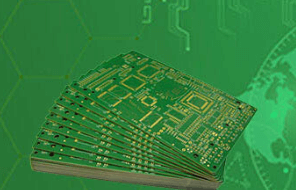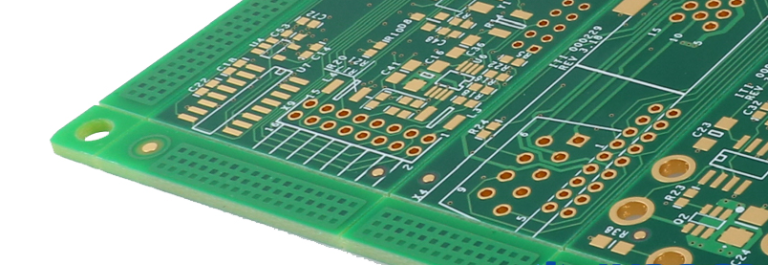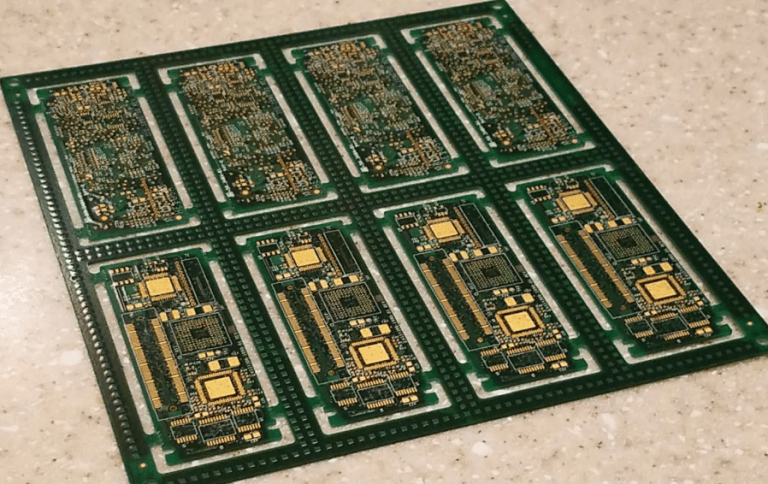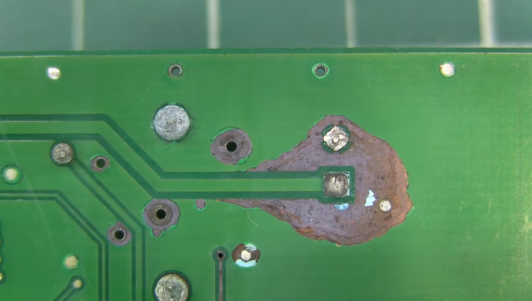Unlocking Innovation: The Art and Science of Circuit Board Manufacturing
Key Takeaways
In your exploration of pcb manufacturing, it becomes evident that this field is not simply about creating components but rather about mastering a blend of artistry and scientific precision. As you navigate through the intricacies of pcb manufacturing companies, you will uncover a multitude of processes that dictate everything from design to final production. A pivotal aspect of successful pcb manufacturing business involves understanding the associated pcb manufacturing cost, which can vary greatly based on materials, technology, and scale of production. By prioritizing advanced techniques and adhering to industry standards, you can enhance the efficiency and reliability of the printed circuit boards produced. As you delve deeper into this evolving landscape, consider how emerging trends may influence your own approach to pcb manufacturing in terms of innovation, creativity, and the sustainability of practices that will shape the future of electronics.
The Evolution of Circuit Board Manufacturing: Historical Perspectives
The field of pcb manufacturing has undergone a remarkable transformation since its inception. In the early days, circuit boards were primarily handmade, with artisans meticulously crafting each component. As the demand for electronics grew in the mid-20th century, so did the need for a more efficient and reliable manufacturing process. This led to the adoption of techniques that integrated multiple components onto a single board, resulting in what we now recognize as printed circuit boards (PCBs).
Today, the landscape of pcb manufacturing companies showcases state-of-the-art technology that facilitates rapid prototyping and production at scale. Historically, various challenges such as high pcb manufacturing costs limited access to advanced electronics for many industries. However, with innovation driving down costs and enhancing efficiency, more businesses find it feasible to incorporate these technologies into their operations.
As you explore this evolution, it’s essential to understand how these changes have paved the way for modern circuit board designs. The increased complexity of devices has encouraged continuous improvement in processes and materials used in pcb manufacturing. This evolution isn’t just a technical feat; it’s a blend of artistry and science that reflects changing consumer needs and technological advancements.
“To remain competitive, it’s vital to keep pace with trends in pcb manufacturing business practices.”
As you consider your own involvement in this field or industry trends influencing it, remember that understanding its historical context enhances your appreciation for ongoing innovations shaping the future of electronics.
Understanding PCB Design: The Foundation of Circuit Board Innovation
The importance of effective PCB design cannot be overstated as it lays the groundwork for the entire pcb manufacturing process. When you embark on a project in the realm of electronics, understanding the intricacies involved in designing your printed circuit board is crucial. At its core, PCB design encompasses various steps including schematic creation, layout optimization, and signal integrity analysis. This meticulous approach ensures not only functionality but also reliability in your final product.
For instance, when choosing a pcb manufacturing company, it’s essential to be aware of how their design capabilities affect overall production costs. Different pcb manufacturing companies may employ varying techniques and technologies that can impact the pcb manufacturing cost significantly. It’s beneficial to compare multiple options and understand their respective strengths to find a partner that aligns with your innovation goals.
Moreover, investing time in advanced design tools can enhance precision while reducing errors during the pcb manufacturing phase. These tools often include simulation software that can predict potential issues before physical production begins, ensuring that your design meets industry standards and specifications. Overall, strong foundational knowledge in PCB design not only empowers you to navigate through the complexities of circuit board innovation but also positions your pcb manufacturing business for success in a competitive landscape.
| Design Aspect | Description | Impact on Manufacturing Cost |
|---|---|---|
| Schematic Creation | Initial setup where electronic components are mapped out | High |
| Layout Optimization | Arrangement of components on the PCB | Moderate |
| Signal Integrity Analysis | Ensures signals remain strong and clear | High |
| Simulation Tools | Predicts performance and identifies issues early | Low |
In your journey through PCB innovation, remember that each step in design influences not only functionality but also cost-effectiveness in pcb manufacturing, giving you a crucial advantage from concept to finished product.
Essential Processes in Circuit Board Manufacturing: From Concept to Reality
In the world of pcb manufacturing, transforming ideas into tangible products involves a series of critical steps that ensure quality and functionality. First, you begin with the design phase, where engineers utilize advanced software tools to create detailed layouts that define the electrical pathways and component placements on the board. This stage is not just about aesthetics; it profoundly impacts how effectively an electronic device will operate. Following this, the prototype development allows you to test these designs, evaluating vital factors like performance and reliability before full-scale production begins.
Once validated, you enter the production phase, where multiple pcb manufacturing companies employ techniques such as etching and layering to construct the circuit boards. Each step requires meticulous attention, combining precision engineering with innovative methods to control costs while maximizing efficiency—this is where the discussion of pcb manufacturing cost becomes essential. Effective management in this area is crucial for businesses aiming to compete in a saturated market.
Moreover, quality assurance measures are integrated throughout these processes to mitigate errors and enhance product reliability. This not only ensures adherence to industry standards but also supports a successful pcb manufacturing business, enabling you to deliver products that meet and exceed customer expectations. As technology advances, evolving trends will shape these essential processes further, encouraging continuous improvement and innovation in circuit board production.
Advanced Technologies Shaping the Future of PCB Production
In the rapidly evolving domain of pcb manufacturing, technological advancements are at the forefront, significantly influencing how these essential components are produced. PCB manufacturing companies are increasingly adopting automation and AI-driven processes to enhance efficiency and reduce errors, ensuring superior quality in their products. Moreover, innovations like additive manufacturing and advanced materials are redefining the possibilities within the industry. For instance, employing flexible substrates not only minimizes weight but also improves performance for cutting-edge applications. Additionally, laser-cutting technologies streamline pcb manufacturing processes, allowing for precise measurements that cater to intricate designs without sacrificing speed or cost-effectiveness. As a result, you can see a promising trajectory where pcb manufacturing cost becomes more manageable, fostering growth in this competitive field. This transformation paves the way for a strong pcb manufacturing business, equipped to meet contemporary demands while adapting to unforeseen challenges and emerging trends in design and technology. The synthesis of artistry and precision through these advanced technologies not only elevates production standards but also sets new benchmarks for reliability and efficiency in modern electronics.
Artistry Meets Precision: The Balance in Circuit Board Design and Manufacture
In the realm of pcb manufacturing, the convergence of artistry and precision plays a pivotal role in achieving optimal results. When you think about pcb manufacturing, it becomes evident that creating a successful printed circuit board (PCB) goes beyond mere functionality—it requires an eye for detail and an appreciation for aesthetic design. As you delve into the intricate process, the design phase functions as the foundation upon which all your pcb manufacturing companies rely. Innovative concepts must be meticulously translated into technical specifications that ensure reliability and efficiency in production.
The balance between artistry and precision is evident in every step of the pcb manufacturing business. Design engineers must employ creativity while adhering to strict industry standards to maintain high quality. This duality ensures that not only does your PCB function as intended, but it also integrates seamlessly into larger electronic systems. Understanding the associated pcb manufacturing cost is essential; however, it’s equally important to recognize that investing in both artistic design and precise engineering ultimately enhances product performance.
By fostering a culture where creativity is valued alongside accuracy, you open doors to innovative solutions that push the boundaries of what’s possible in circuit board design and manufacture. This holistic approach not only sets your business apart but also exemplifies how essential both artistry and precision are in navigating today’s competitive landscape of PCB production.
Industry Standards and Best Practices in PCB Manufacturing
In the realm of pcb manufacturing, adhering to industry standards and best practices is paramount for ensuring quality and reliability. Companies engaged in pcb manufacturing must comply with established guidelines such as IPC-A-600, which defines acceptability for printed boards, or IPC-2221, which outlines the generic standards for designing PCBs. By following these frameworks, pcb manufacturing companies can significantly reduce the chances of faults and failures in their products.
Moreover, the pcb manufacturing cost can be optimized through efficient practices like just-in-time inventory management and streamlined production processes. Embracing advanced technologies also plays a crucial role; for instance, automated inspection systems can detect issues early in the production process, while computer-aided design tools enhance precision in layout designs. These techniques not only improve product quality but also help maintain competitive pricing, which is vital for sustaining a successful pcb manufacturing business.
Investing time in employee training provides another layer of benefit. Skilled workers who understand both the artistry and the technical intricacies involved contribute to better outcomes. When everyone involved has a solid grounding in best practices, you elevate the overall performance of your pcb manufacturing operations. Through these concerted efforts focused on standards and efficiency, your business not only meets client expectations but also sets a benchmark within an increasingly competitive industry.
Challenges and Solutions in Modern Circuit Board Development
In today’s fast-paced technological landscape, pcb manufacturing faces a myriad of challenges that require innovative solutions. One significant issue is the ever-increasing demand for high-density interconnections while maintaining reliability and performance. This challenge compels pcb manufacturing companies to adopt advanced materials and techniques that ensure durability without compromising functionality. Moreover, the rising expectations for miniaturization in electronics compel manufacturers to address tighter design specifications, which can escalate the pcb manufacturing cost if not managed effectively.
To combat these challenges, many organizations turn to automation and sophisticated design software that streamline processes from conception to production. This shift not only enhances precision but also reduces errors, leading to improved product quality. Furthermore, collaborative efforts among pcb manufacturing companies play a vital role in sharing best practices and innovations, resulting in a more efficient industry standard that meets rigorous demands.
Another pressing challenge is sustainability in the pcb manufacturing business, where environmental regulations call for eco-friendly practices. Adopting greener processes can appear daunting; however, investing in sustainable materials and recycling methods can significantly reduce waste and lower production costs over time. By addressing these obstacles with proactive strategies, companies position themselves not only for current market demands but also for future growth in an evolving sector where adaptability is paramount.
Trends and Future Directions in the World of Circuit Board Manufacturing
As you navigate the landscape of pcb manufacturing, you’ll find it is an arena constantly influenced by technological advancements and market demands. The demand for pcb manufacturing companies is increasing as industries seek to innovate. IoT (Internet of Things) has emerged as a leading trend, driving manufacturers to create more compact and efficient designs. As devices become smaller yet more powerful, you’ll see a shift in the materials used, pushing the boundaries of pcb manufacturing cost. Emerging materials such as flex circuits and advanced substrates are becoming popular, allowing for greater flexibility and performance in electronic devices.
Furthermore, sustainability practices are carving new paths in pcb manufacturing business models. Companies are increasingly focusing on eco-friendly solutions, such as lead-free soldering processes and recyclable materials, which not only reduce environmental impact but also attract conscious consumers. Implementing automation through robotics and AI enhances precision while streamlining production times.
In addition to technological innovation, collaboration is a cornerstone for future progress. Partnerships between pcb manufacturing companies and tech firms can lead to breakthroughs in design capabilities, fostering an environment ripe for creativity. The landscape you traverse today will undoubtedly evolve, presenting both challenges and opportunities that will redefine the parameters of circuit board development for years to come.
Conclusion
In the intricate landscape of pcb manufacturing, you may find that understanding the balance between artistry and technical precision is key to forming a successful pcb manufacturing business. As you reflect on the various pcb manufacturing companies in the industry, it becomes evident that they each bring unique innovations and methodologies to the forefront of electronic design. Additionally, when considering the pcb manufacturing cost, it’s crucial to weigh these factors against the quality and reliability of the products being created. Moreover, as industry standards continue to evolve, keeping abreast of emerging trends will allow you to position yourself effectively within this competitive arena. Whether you’re just starting or looking to enhance an existing operation, recognizing these elements will empower your journey in unlocking innovation within circuit board manufacturing.
FAQs
When exploring pcb manufacturing, you may have several questions regarding the processes, costs, and companies involved in this intricate field. A common inquiry revolves around the pcb manufacturing cost; understanding these costs is crucial for anyone considering entering this market or initiating a pcb manufacturing business. The expenses can vary significantly based on multiple factors such as materials, complexity of the designs, and the quantity of boards produced. Additionally, many look for reputable pcb manufacturing companies that can provide high-quality boards while adhering to industry standards.
Another frequent question is about the distinct processes involved in pcb manufacturing. From initial design to final assembly, each step requires precision and knowledge of advanced technologies to ensure that the final product meets performance expectations. Additionally, you might wonder about the challenges faced by manufacturers today, including meeting increasing demands for faster turnaround times and more complex designs.
To stay informed about these aspects and enhance your understanding of today’s pcb manufacturing landscape, it is important to consider all factors that impact cost and quality.
For more detailed insights into pcb manufacturing, feel free to explore further by clicking on this link:






